People who don’t play PC games only need simple monitors. That’s because outside of PC gaming, content rarely exceeds 30 frames per second. The same is true for virtually all other aspects of a monitor’s performance. Nobody cares about the difference between 5ms response time and 1ms response time, unless you’ve got the niche needs of a gamer.
That’s because game content is fundamentally different. Gamers want to run their favorite game at 60 FPS and well beyond. Achieving that requires better refresh rates. Gamers may want reductions in motion blur, which requires stronger response times from a monitor. In short, if you play almost any type of modern action game, gaming monitors can have performance differences that are easy to feel.
Samsung CJG5 Curved 32″ Gaming Monitor
The Samsung CJG5 has a number of things going for it. For starters, it’s ridden the wave of popularity encompassing the 144Hz monitor format. And it’s 32” construction makes it nearly as large as a television, allowing the CJG5 to be a favorable replacement for your primary display.
But while the CJG5 has the features that most gamers want, it doesn’t have quite everything. Whether or not it’s the right monitor for you ultimately depends on the types of games you play most. It also depends on if you care about non-gaming factors, like screen performance while watching a movie.
Build & Design
The Samsung CJG5 measures 9.5 x 28 x 20.4-inches, and weighs about eight pounds. For better or worse, Samsung’s monitors have always aimed to look professional and standard. And the CJG5 is a continuation of that trend, with its blue-gray color palate. It looks as professional as an ordinary black monitor, but the subtle difference does have slightly more style and distinction.
One thing that’s easy for anyone to appreciate is the stand. It’s a somewhat standard design for Samsung monitors, using two simple arms which extend into a broad “V” shape. This shape takes up minimal desk space and looks quite professional, which is why you can find it used by Samsung on even some of their best panels.
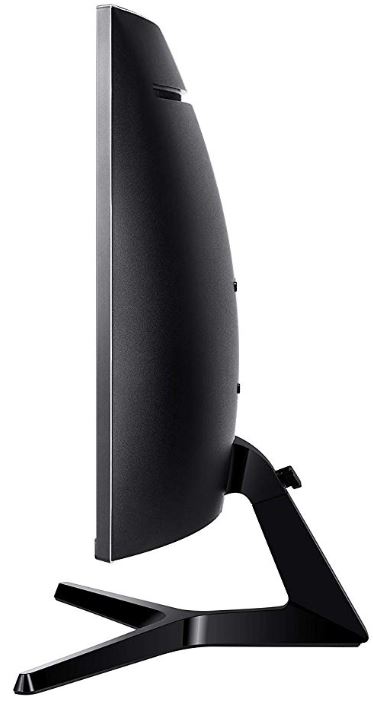
Shrinking Bezels
It seems every few years, bezels get a little bit thinner. The Samsung CJG5 uses bezel which are slightly thinner than what used to be marketed as bezel-free design, a degree of thinness which first emerged on the market in 2016. In short, it provides the near elimination of bezel entirely.
But it’s worth noting, thin bezels are more important on smaller screens where the bezel is a larger part of your perception. Even though the CJG5 is quite thin, it’s not the same selling point as on smaller panels, and it’s more about style than anything else.
Resolution Compared
Everybody loves a big screen. The problem with big screens is that every inch of screen you gain has to be filled with pixels. If you’re using 1080p resolution, that refers to a finite amount of pixels you have to spread across an equally finite screen space. Across its impressive 32” display, the Samsung CJG5 provides a 2560 x 1440 resolution. That’s also known as 1440p or 2K.
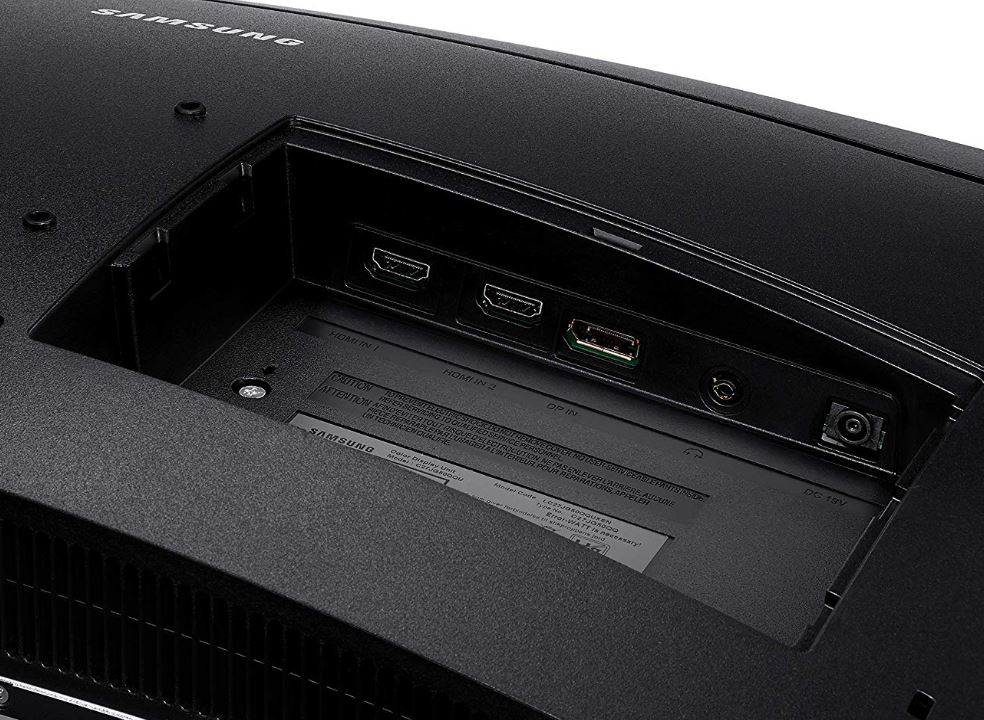
As always, it’s important to contextualize screen resolution against screen size. The easiest way to do that is by focusing on pixels per inch. For example, a 24” panel using 1080p resolution works out to roughly 100ppi. If you extended that panel towards 27”, and kept the 1080p resolution, pixels per inch would decrease.
With that said, the Samsung CJG5 Curved 32″ Gaming Monitor has roughly 92ppi. That means from normal monitor viewing distances, the panel has roughly the same clarity as a 27” 1080p monitor, which is fairly high relative to large panels like the CJG5. And for most people, this is the goldilocks zone, the perfect size to resolution ratio.
Aiming for the Middle
That’s because your only alternatives to increase or decrease PPI are fairly bleak. You can either decrease your screen size or increase your resolution. In this case, that would mean going down towards 27” or up towards 4K.
Although the 4K format is growing, it’s still in infancy. Content is sparse, costs are still somewhat high. And a 4K monitor with gamer-friendly features, like high refresh rates, cost the same as a small car. They’re also far more difficult to drive without powerful computers behind them.
Moving in the opposite direction, the Samsung CJG5 does have a separate version which is available in the 27” format. The 27” version has all of the same features as its 32” counterpart, apart from its curvature, and it’s a reasonable alternative to the 32” version.
But for most people, the Samsung CJG5 Curved 32” Gaming Monitor represents the sweet spot in this equation. That’s because 27” panels feel like large monitors, and 32” panels feel more like small televisions. It’s a palpable difference in immersion, especially when combined with the CJG5’s Curved design.

Visual Performance
The CJG5 is constructed from a Samsung VA panel. Ten years ago, the idea of a gaming monitor using a VA panel would be totally preposterous. But the comparative strengths and weaknesses of different panel types have narrowed in recent years.
The advantages in refresh rate and response time held by TN panels has weakened, as other types of panels have become more competent in those areas. These changes have favored a switch towards more color-rich panels, and away from the TN panels which gamers have traditionally flocked towards.
The VA panel is the secret behind Samsung’s impressive 3000:1 contrast ratio, the trick to the CJG5’s impressive bright whites, dark blacks, and generally rich colors. VA panels still have not achieved the 1ms response time you’ll find on TN panels. But strong VA panels like the CJG5 can approach 5ms response time, which is passable for nearly all gamers playing nearly all types of games.
To the ordinary person the difference in motion blur between 1ms and 5ms is scarcely imperceptible. And it’s not something to be deeply concerned over because motion blur is something that’s fairly poorly handled by LED technology to begin with. But until some brand carries to market OLED displays that can compare to existing displays, it’s the best we can do.
Aggressive Curvature
The screen is constructed with a fairly sharp 1800R curvature. Optimal viewing distance for this panel will be between roughly 20-inches and 3.5 feet away from the screen. The use of a VA panel ensures that viewing outside of that particular range still ensures reasonably good color accuracy. For example, if your friend is watching your screen at an angle. But the best view in the house is without a doubt directly in-front of the Samsung CJG5.
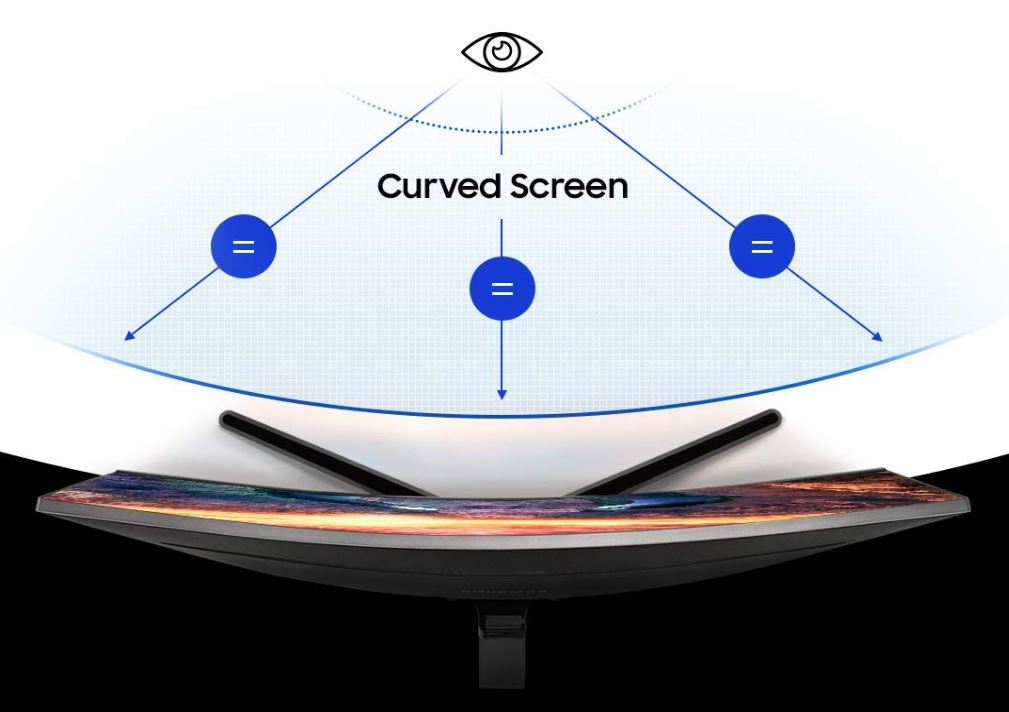
Human eyes are very well adapted for judging distance. When you’re looking at a screen, the edges of that screen are further away from your perception than the center of the screen. It’s something we all become used to while looking at flat screens, and it’s subtly picked up on by the brain. Curving the screen is something that corrects for those perceptual differences.
In most circumstances, it’s great for immersion. And screen curvature is something most people end up enjoying. Some people are generally indifferent and could live without it, others want it forever once they’ve tried it. Curvature tends to be more important if you’re sitting at predictable distances from your screen. And to its credit, there are only a handful of circumstances where it doesn’t make sense.
For example, if you were a business planning to mount a stationary panel on your wall to display things to customers from a variety of viewing angles, it would make no sense to have curvature. It wouldn’t particularly detract from anyone’s viewing experience, but it would certainly look odd, and it would stick-out from the wall more than necessary.
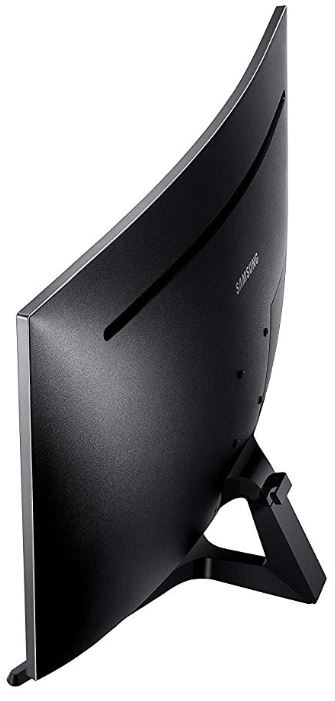
Gaming Performance
At the heart of modern gaming monitors are their refresh rates. The Samsung CJG5 Curved 32″ Gaming Monitor provides a smooth 144Hz refresh rate for full immersion. That allows it to display a maximum of 144 frames per second, which can eliminate screen tear and allows for smooth flowing frames and beautiful presentation.
But it’s not all about beauty. Take a look at any corporate sponsored e-sports team. If you observe what players use over long periods of time, you’ll notice some of the best gamers play with relatively simple gear. That’s because they use what works, not what’s marketed as being useful.
You’ll also notice many professional gamers strongly prefer 144Hz. And that’s because they believe it’s advantageous in a variety of circumstances. Whether or not it makes a big difference in your play depends on what you’re playing, but increases in frame rates tends to be especially useful within the FPS genre.
Other Considerations
Samsung makes color adjustments easier as well. The CJG5 provides cinema and game modes optimize for black gamma levels, sharpness, contrast ratios, color value settings appropriate for the game or movie you’re playing That way you don’t have to toggle through settings on your own each time you want to start playing a game, or switch over to YouTube a few moments later.
But it is missing one thing: dynamic sync technology. It has no support for AMD’s FreeSync or NVidia’s G-Sync. But the presence of 144Hz makes those features unnecessary if your machine is keeping high frame rates, and the absence of those features only means the CJG5 is more affordable. G-Sync in can add nearly $100 to the price of a monitor.
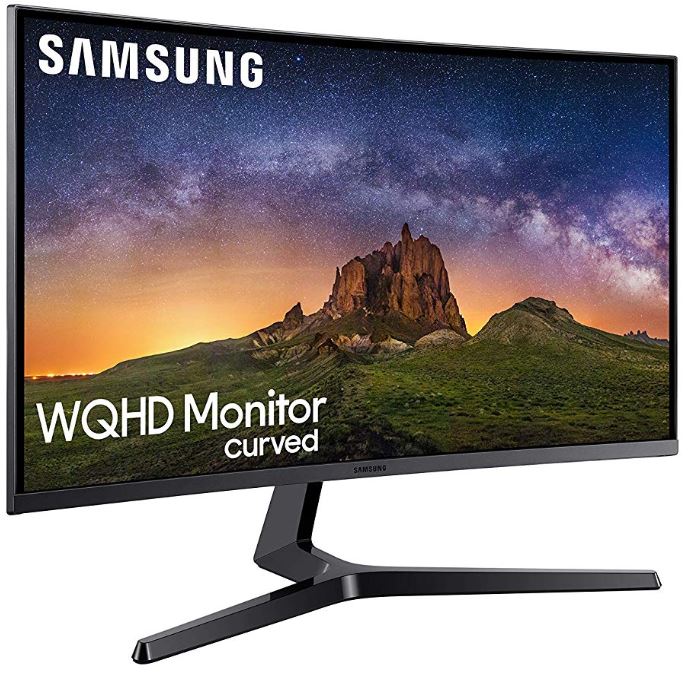
Who Should Choose the Samsung CJG5 Curved 32″ Gaming Monitor?
If your PC frequently struggles to play games, and you often find yourself playing around 50 FPS or less, then you may want to add $100 to your budget and grab G-Sync monitor. But if your PC doesn’t often struggle to keep up, and you can depend on having a steady supply of 100+ frames per second, then features like G-Sync will do nothing but add cost.
If that describes you, then the CJG5 32” Curved Gaming Monitor is an excellent choice. At this price point, the CJG5 provides fairly strong value. Only a few years ago, the same panel would’ve been three times as expensive.
It provides richer colors than many gamers are used to seeing, from having spent years using their comparably dull TN panels. And it may or may not make you better at what you play, but it’s unquestionably a good choice for gamers who are looking for immersion.
Meet Ry, “TechGuru,” a 36-year-old technology enthusiast with a deep passion for tech innovations. With extensive experience, he specializes in gaming hardware and software, and has expertise in gadgets, custom PCs, and audio.
Besides writing about tech and reviewing new products, he enjoys traveling, hiking, and photography. Committed to keeping up with the latest industry trends, he aims to guide readers in making informed tech decisions.

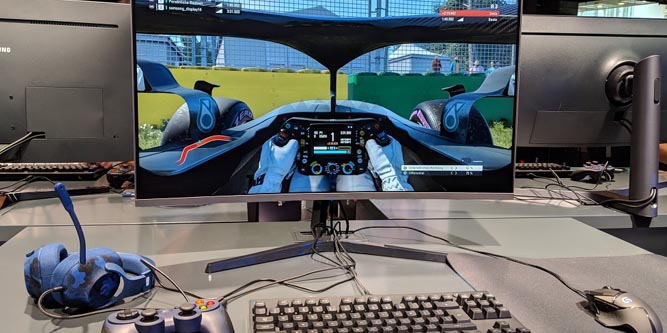
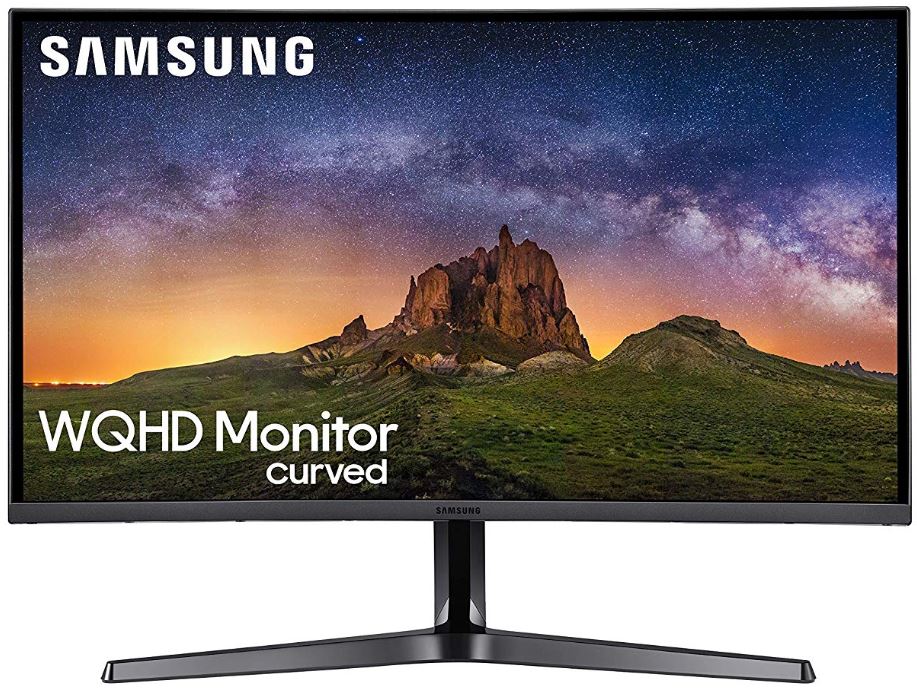
Hey
I was wondering about the screen color gamut (NTCS 1976)(Adobe RBG)(sRBG)
thank you
Hello,
Thanks for this article, I read it all.
I bought that monitor almost a week ago (coming from an Asus ROG Swift PG278QR, which is known to be in the top 3 of 27″ QHD G-Sync monitors since 2017).
This choice may be not that wise at first, but I’m not playing as much as before and I always want bigger and bigger screens.
I think that I cannot stress to say that the ROG is still way better in EVERY aspects (gaming-wise), maybe except dark colours rendering due to differences into backlight technologies, and the curve adding a lil something to be honest.
I just wanted to know if you had some recommandations for best calibration of the CJG5 monitor into the OSD? (In example values for RGB colors, Contrast, Brightness, Black Equalizer, etc…)
Thanks.
I just wanted to know that it’s an in depth review so you might have done some testing. Here are my questions about Samsung CJG5:
1. What is the maximum brightness it can achieve?
2. Did you get screen tearing issues?
3. Is this a DCI-P3 wide color Gamut monitor?
4. What is the actual contrast ratio you found in your testing?
5. Did you face a lot of ghosting issues or its normal like other VA monitor?
6. Is the VA panel used on this monitor of good quality or not?
I would be grateful to hear your answer 🙂